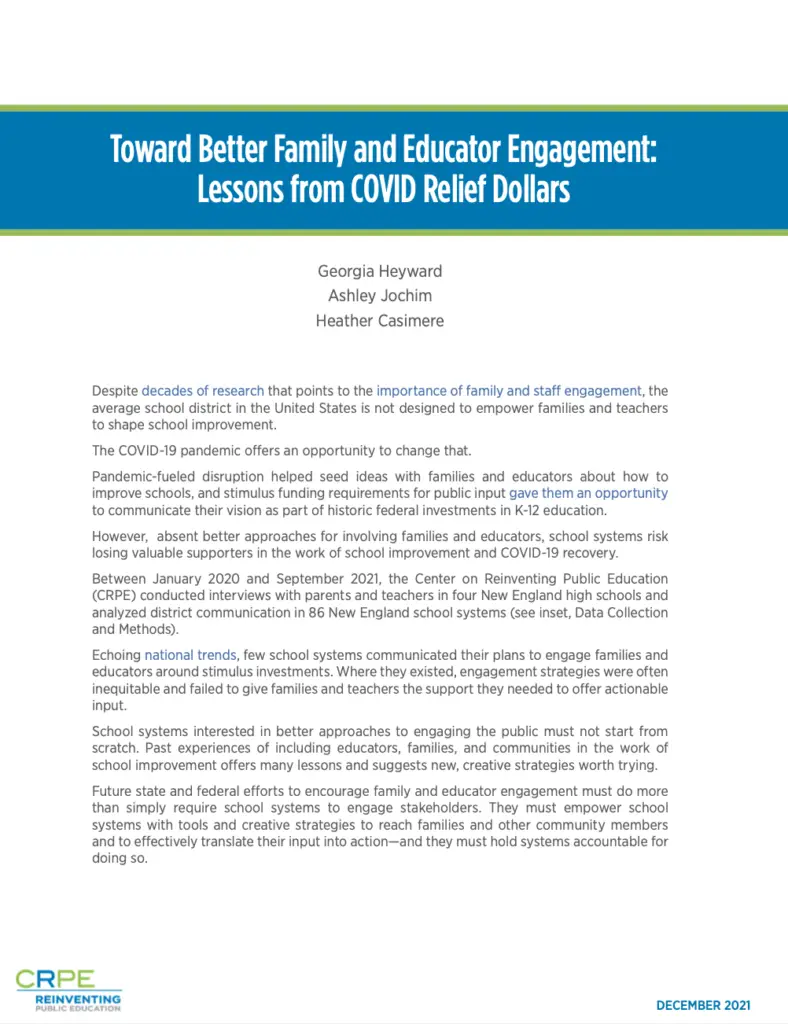Despite decades of research that points to the importance of family and staff engagement, the average school district in the United States is not designed to empower families and teachers to shape school improvement.
The COVID-19 pandemic offers an opportunity to change that.
Pandemic-fueled disruption helped seed ideas with families and educators about how to improve schools, and stimulus funding requirements for public input gave them an opportunity to communicate their vision as part of historic federal investments in K-12 education.
However, absent better approaches for involving families and educators, school systems risk losing valuable supporters in the work of school improvement and COVID-19 recovery.
Between January 2020 and September 2021, CRPE conducted interviews with parents and teachers in four New England high schools and analyzed district communication in 86 New England school systems.
Echoing national trends, few school systems communicated their plans to engage families and educators around stimulus investments. Where they existed, engagement strategies were often inequitable and failed to give families and teachers the support they needed to offer actionable input.
School systems interested in better approaches to engaging the public must not start from scratch. Past experiences of including educators, families, and communities in the work of school improvement offers many lessons and suggests new, creative strategies worth trying.







